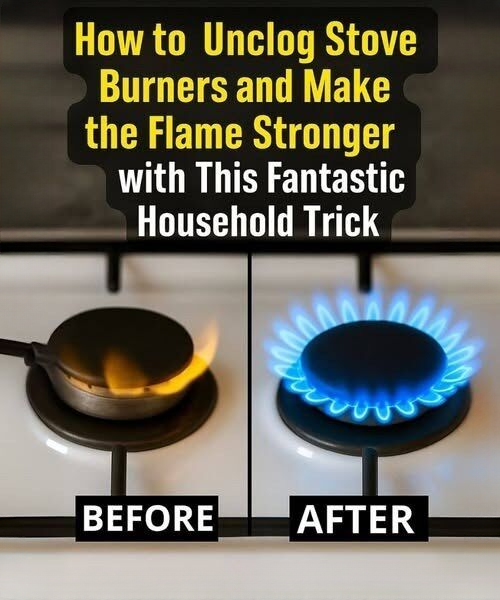How to Fix a Weak or Flickering Gas Stove Flame
If your gas stove flame is weak, uneven, or flickering, it’s usually due to clogged nozzles. Over time, grease, food residue, and dust can block the narrow gas passages, reducing flame strength and heat efficiency. The good news: you can clean your stove yourself in under an hour with basic household items, no special tools needed.
What You’ll Need:
-
Aluminum-safe cleaner – dissolves grease without damaging metal.
-
Wooden stick or spoon handle – for gently clearing the nozzles.
-
Soft tissue or toilet paper – for wiping away debris.
⚠️ Avoid metal tools or harsh chemicals, which can damage the nozzles or leave harmful residues.
Step-by-Step Instructions
1. Safety First
-
Turn off the stove and close the gas valve.
-
Let everything cool completely.
-
Remove burner grates and caps to access the nozzles.
-
Work in a well-lit, ventilated area.
2. Apply the Cleaner
-
Dab a small amount of cleaner onto each nozzle.
-
Let it sit 5–10 minutes to dissolve grease and residue.
3. Clear the Nozzles
-
Gently insert the wooden stick into the gas tube and move it in small circles or short strokes to dislodge debris.
-
Take your time and be careful not to scratch the interior.
4. Wipe Everything Clean
-
Use tissue or toilet paper to remove loosened grime and cleaner.
-
Wipe surrounding metal surfaces.
-
Allow parts to air dry (~20 minutes) or use a cool hairdryer.
5. Inspect Parts
-
Check that all burner holes are open and clean.
-
Replace any cracked or corroded components.
6. Reassemble and Test
-
Put burner caps and grates back in place.
-
Reopen the gas valve slowly.
-
Light one burner first and check the flame. It should be bright blue, steady, and even.
-
Test other burners afterward.
Tips for Ongoing Maintenance
-
Clean burners and caps weekly with warm, soapy water.
-
Repeat nozzle cleaning every 2–3 months.
-
Perform a gas leak check after maintenance: brush a soap-and-water mix around connections—bubbles indicate a leak.
Why This Works:
The buildup inside the tiny passages, not mechanical failure, is usually the cause of weak flames. The cleaner dissolves grease, and the gentle stick clears the residue, restoring proper gas flow.
Benefits of Regular Cleaning
-
Better Energy Efficiency: Gas is used more effectively.
-
Cleaner Kitchen: Less soot and residue buildup.
-
Longer Burner Life: Prevents clogs and prolongs stove lifespan.
Extra Tips:
-
Pay attention to front burners—they tend to accumulate more residue.
-
Think of this as a “tune-up” for your stove: proper gas and air flow improves cooking times, simmering, and overall performance.
Don’t Wait for Weak Flames:
Regular maintenance is easier and cheaper than repairs. Even durable burners often just need cleaning. A clean stove produces strong, steady blue flames and lasts for years with minimal effort.
